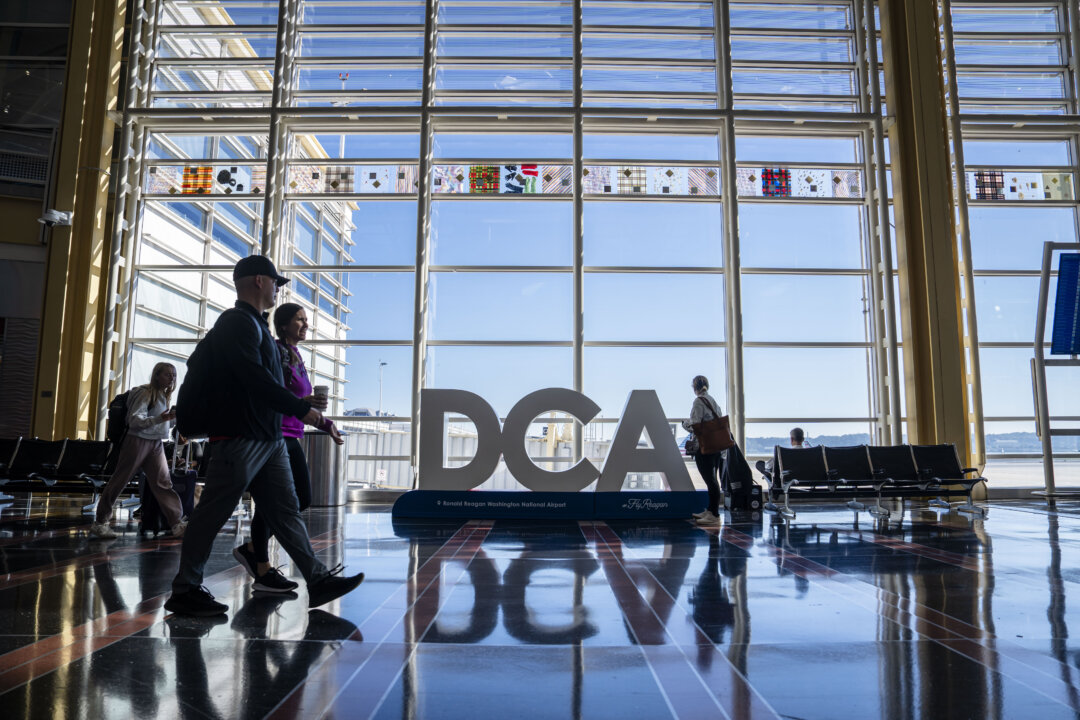The FAA told Congress it is reviewing the Army helicopter’s route in the ‘loss of separation’ incident to determine if it violated an agreement.
The Army has suspended helicopter flights into and around the Pentagon after an incident last week involving a military helicopter flying close to Ronald Reagan Washington National Airport (DCA) that resulted in air traffic control aborting the landings of two commercial flights.
The May 5 suspension, which will affect helicopter operations out of the 12th Aviation Battalion, was confirmed to The Epoch Times by a Department of Defense official on Monday.
That battalion is tasked with evacuating top political officials in cases of emergency.
In late January, one of its Black Hawk helicopters was involved in the fatal midair collision with a commercial jet near Ronald Reagan Washington National Airport, which killed all 67 people on board both aircraft.
The incident that prompted the helicopter suspension occurred on May 1, when a Delta Air Lines flight and a Republic Airways Flight were both instructed by air traffic controllers to abort their landings and perform go-arounds at roughly 2:30 p.m. (ET) because of a military air transport helicopter operating nearby.
In a statement sent to NTD News, sister media of The Epoch Times, the Federal Aviation Administration (FAA) confirmed the incident and said it and the National Transportation Safety Board would investigate.
Transportation Secretary Sean Duffy took to social media on May 2 to sharply rebuke the Pentagon for the incident.
“Unacceptable,” Duffy wrote in a post on social media platform X.
“Our helicopter restrictions around DCA are crystal clear. I’ll be talking to the Department of Defense to ask why the [expletive] our rules were disregarded.”
Duffy, referring to January’s deadly midair collision near Reagan national airport, warned that safety protocols need to be enforced without exception.
“Safety must ALWAYS come first,” he wrote. “We just lost 67 souls! No more helicopter rides for VIPs or unnecessary training in a congested DCA airspace full of civilians. Take a taxi or Uber—besides, most VIPs have black car service.”
The incident also prompted bipartisan condemnation among lawmakers who are investigating the January midair collision, among other close calls at what is one of the nation’s busiest airports.
“Just days after military flights resumed in the National Capital Region, the Army is once again putting the traveling public at risk,” Senate Commerce Commitee Chairman Ted Cruz (R-Texas) wrote in a post on X, chastising the Army for an event that “could have resulted in the loss of hundreds of lives.”
“I believe it’s time for the FAA to act swiftly and assert control over the national airspace so the Army stops running air taxis for military officials near Ronald Reagan Washington National Airport,” Cruz added.
Sen. Maria Cantwell (D-Wash.), ranking member on the Commerce Committee, criticized the fact that the same Army brigade was again flying a helicopter too close to Reagan national airport just months after January’s fatal midair collision.
“It is outrageous that only three months after an Army Black Hawk helicopter tragically collided with a passenger jet, the same Army brigade again flew a helicopter too close to passenger jets on final approach at [the airport].
“This comes less than a week after this brigade resumed flights in the National Capital Region. It is far past time for Secretary [Pete] Hegseth and the FAA to give our airspace the security and safety attention it deserves,” she said in a statement.
In March, the FAA permanently closed one key route and banned the use of two smaller runways at the airport whenever helicopters conduct urgent missions or operate nearby.
The FAA did not immediately respond to a request for comment regarding the Army’s decision on Monday to suspend helicopter flights into, out of, and around the Pentagon.
Rudy Blalock and Tom Ozimek contributed to this report.

